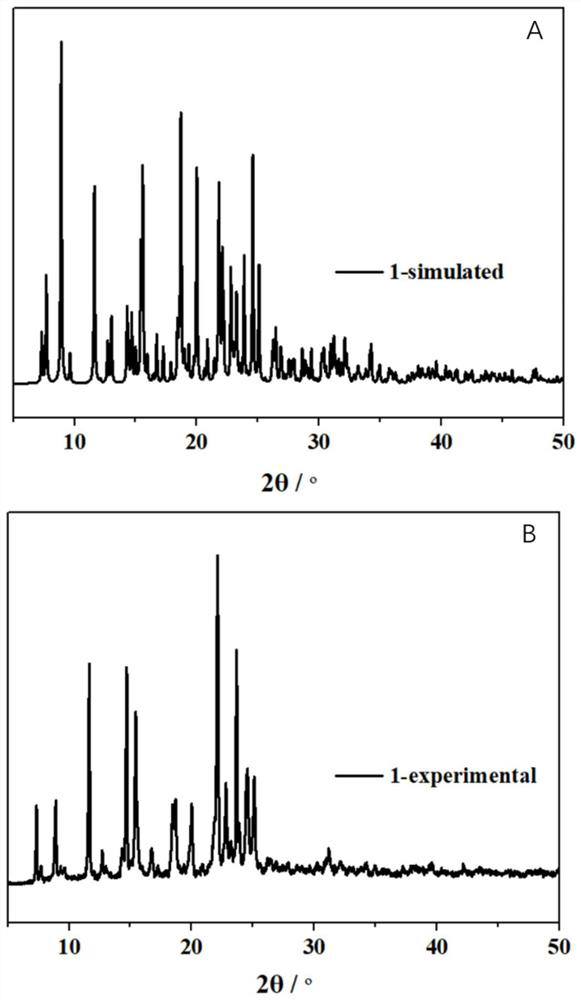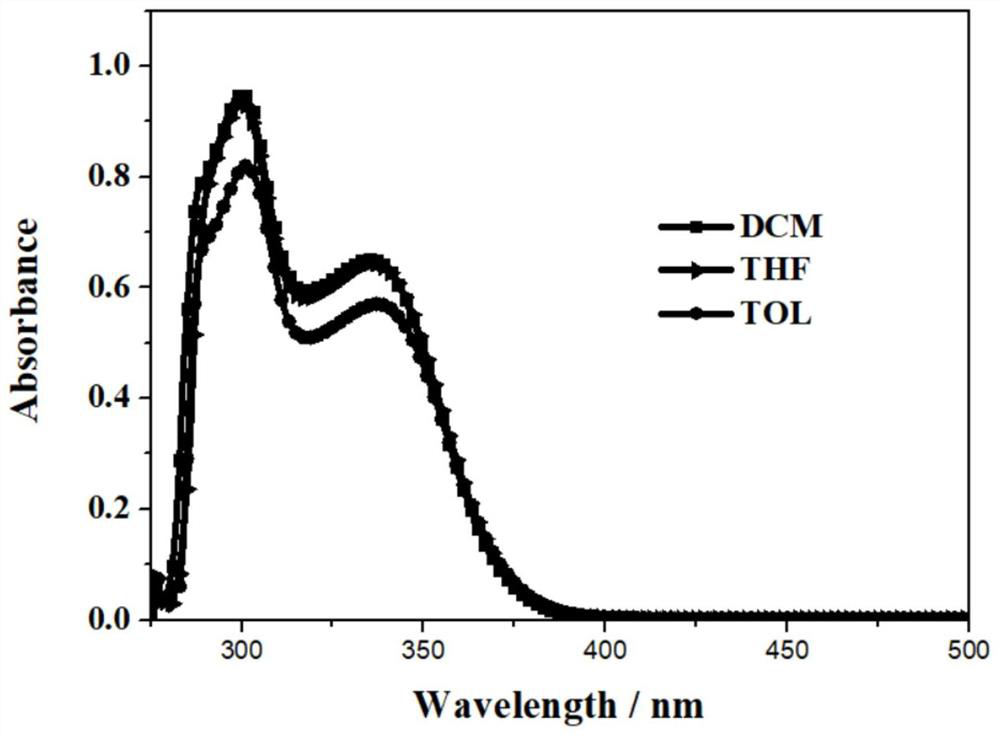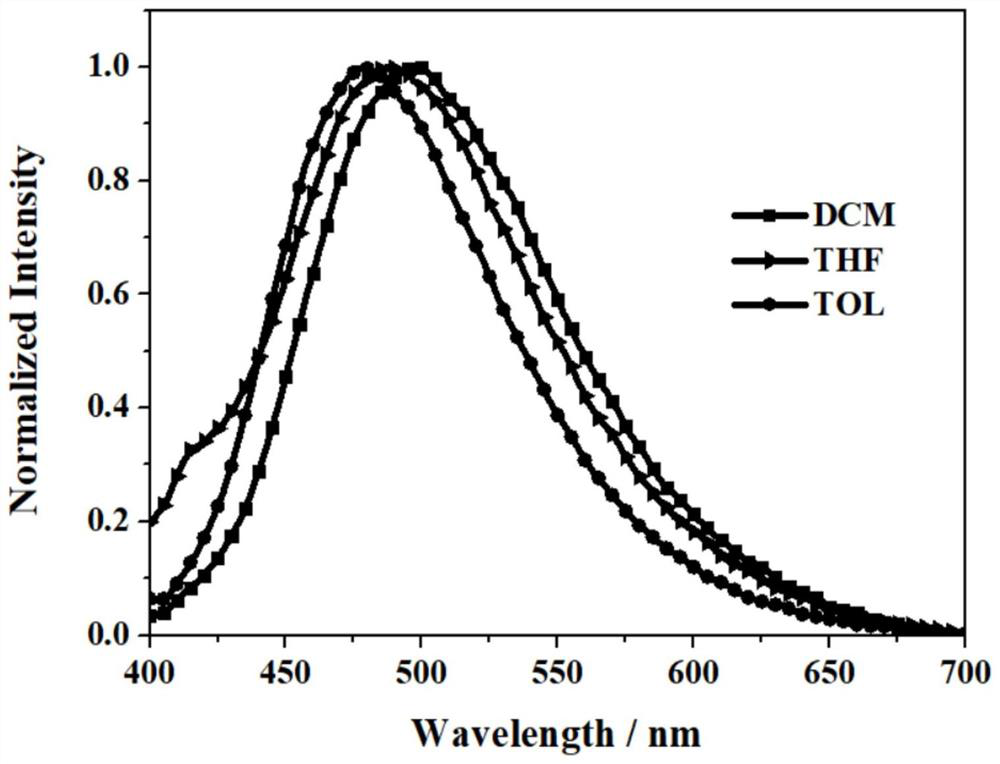Excitation-adjustable single-component organic triaryl boron room-temperature phosphorescent material
A technology of triaryl boron and room temperature phosphorescence, which is applied in the fields of luminescent materials, organic chemistry, sustainable architecture, etc., can solve the problems of exciting a single blue or green light, the performance is affected by the deployment ratio, and the excitation cannot be adjusted. Achieve the effect of less free volume, suppress non-radiative transition, and improve intersystem crossing efficiency
- Summary
- Abstract
- Description
- Claims
- Application Information
AI Technical Summary
Problems solved by technology
Method used
Image
Examples
Embodiment 1
[0045] A single-component organic triaryl boron room temperature phosphorescent material with adjustable excitation, the molecular structure of which is as follows:
[0046]
[0047] In Formula 1, Mes is 2,4,6-trimethylphenyl, and a D-A type room temperature organic phosphorescent white light material is constructed by using benzene ring as the electron donor (D) unit and BMes2 as the electron acceptor (A) unit. ;
[0048] Such as the preparation of compound 1 of formula 1, the synthetic route is as follows:
[0049]
[0050] Specifically include the following steps:
[0051] 1) Preparation of Compound R1
[0052] Under the protection of argon, weigh 1,3-dibromobenzene (4.72g, 20mmol) and dissolve it in freshly distilled tetrahydrofuran solution (60mL) and place it in a 250mL Shrek bottle, degas once, dropwise at -78°C Lithium diisopropylamide (LDA) solution (10mL, 20mmol, 2M in THF) was added dropwise, and after the reaction was continued for 1h at -78°C, I was slowl...
Embodiment 2
[0061] Room temperature phosphorescence performance test of compound 1 in embodiment 1:
[0062] figure 1 They are the PXRD of compound 1 after single crystal data fitting (A) and experimental measurement (B). Through data comparison, it can be seen that the test sample used in the experiment is a pure compound 1 sample.
[0063] figure 2 and image 3 is the ultraviolet absorption spectrum and photoluminescence spectrum of compound 1 in dichloromethane, tetrahydrofuran and toluene solutions respectively, wherein figure 2 , The absorption band around 295-300nm belongs to the n-π* transition absorption, and the absorption band around 330-340nm belongs to the π-π* transition absorption.
[0064] Figure 4 It is the photoluminescence diagram of compound 1 at different excitation wavelengths. With the increase of excitation wavelength, the peaks at 500nm and 535nm have a clear strengthening trend compared with the emission peak at 415nm; by fitting the spectral data, in In t...
PUM
 Login to View More
Login to View More Abstract
Description
Claims
Application Information
 Login to View More
Login to View More - R&D
- Intellectual Property
- Life Sciences
- Materials
- Tech Scout
- Unparalleled Data Quality
- Higher Quality Content
- 60% Fewer Hallucinations
Browse by: Latest US Patents, China's latest patents, Technical Efficacy Thesaurus, Application Domain, Technology Topic, Popular Technical Reports.
© 2025 PatSnap. All rights reserved.Legal|Privacy policy|Modern Slavery Act Transparency Statement|Sitemap|About US| Contact US: help@patsnap.com



